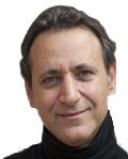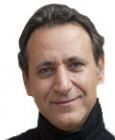Child Development
Healing Our Wounds: Finding the Gold Within
Bringing life and light to our magnificent wholeness
Posted July 6, 2016
We all have wounds that need tending. How could it not be true? We live in an outer world beset with so much violence in the form of sexism, racism, objectification, domestic assault, childhood abuse, bullying, marginalizing cultural messages about beauty and success, and family dysfunction.
In the last one hundred years, western psychology has brought its intelligence, heart, and research to healing these wounds. However, in our effort to be relieved of their pain, torment, and resulting patterns of behavior, we too easily dismiss the real possibility that a great gift lies hidden, even incubating, in that wounded territory. Hoping to “get over” our wounds, we may turn away from, or even feel ashamed of, the very place where our gift arises and lives.
Consider the following stories:
Maya Angelou: Sexual Assault and the Gift of Voice
Maya Angelou was born in St. Louis, Missouri, in 1928. At the age of eight, she was raped by her mother’s boyfriend. Maya hesitated to tell her family, fearing that a relative would hurt or kill the man. Sure enough, a few days after she spoke up, the man was found dead. "I thought, my voice killed him; I killed that man, because I told his name. And then I thought I would never speak again, because my voice would kill anyone ..."[1]
Maya did become silent—for five years. Her family, not knowing how to respond, sent Maya to her grandmother’s home in Arkansas. Her grandmother held Maya’s silence in a sacred way, telling Maya not to worry, that she would become a great teacher some day. Eventually, the world bore witness to that fact: She was one of America’s greatest teachers through her public presence, volumes of poetry, seven autobiographies, and tenure at Wake Forest University.
The wound Maya received is powerful and clear, but what is also critical to the story is the way she responded—by becoming silent.
The wound not only touched her body but also touched her voice.
In a way, Maya was right about her voice—it was indeed powerful. It not only played a role in her rapist’s demise but also continued to play a role in the life and empowerment of everyone who heard her speak. It was as if her childhood psyche knew, somewhere in its depths, that she held that kind of power. It was as if she cooked that voice, alchemically, until it was ready. It was as if her grandmother also knew of the secret of Maya’s voice, holding her silence with a precious love until, five years later, she urged Maya to deliver a poetry reading to the Sunday church community.
Maya’s grandmother seemed to know something that we therapists are still learning: some things cook, gestate, and unfold in their own time, and in that wound may be a true treasure.
James Baldwin: Childhood Criticism and the Gift of Vision
James Baldwin was one of America’s greatest novelists, playwrights, and activists. As a child, James’s father teased him so badly about his bulging eyes that he lay on his back and placed coins on them to “push them back in.” How can we not be moved by his childhood story and pain?
However, the healing of his wound goes beyond bringing relief to his childhood suffering. A more whole healing requires embracing not only his story and childhood suffering, but also the gift hidden in those eyes. Baldwin’s bulging eyes reached out not only literally, but also symbolically, in his examination of America’s racism, homophobia, and deadly innocence. His eyes peered into the dark, illuminating the shadows in the dimly lit underbelly of America.
When you see from the underbelly, you see things that others can’t see, don’t see, won’t see.
His fierce vision was also a loving one, revealed in a letter to his 16-year-old nephew, where he wrote about white America—his countrymen: “The really terrible thing, old buddy, is that you must accept them, and I mean that very seriously. You must accept them and accept them with love, for these innocent people have no other hope. They are in effect still trapped in a history which they do not understand and until they understand it, they cannot be released from it.” Those bulging eyes never veered from the truth, and they always emanated from the heart.
The insult he received from his father met him right where his greatest gift was.
His story begs the question: Why didn’t James’s father tease his belly, his sensitivity, his intelligence? It is as if the arrow of the father’s teasing is drawn, with psychological accuracy, right to Baldwin’s gift. Perhaps James’s eyes intimidated his father; perhaps his father was threatened by what James could see in him. Either way, the insult he received from his father met him right where his greatest gift was.
Can you imagine telling Baldwin's abuse story while failing to mention that he was one of America's greatest visionaries? That would be tragic! The same is true for all of us.
VIDEO: THE GIFT IN BALDWIN'S EYES
Client Story: Getting Hurt and the Gift of Sensitivity
I once worked with a woman who felt unseen as a child. For some children this would not have wounded them as powerfully, but for this woman it cut deep. She came to me suffering from being regularly hurt by friends, family, and peers. Naturally, she wanted to overcome this pattern.
“How can I learn to be less sensitive?” she asked. She unwisely pursued her healing by trying to overcome her sensitivity. Laying the blame for her suffering began early, when her parents told her, as did many friends, that she must get over being so sensitive.
Instead of agreeing to her agenda, I made further inquiry about her sensitivity: where it lived inside of her (“In my heart”), what aspect of nature could represent her sensitivity (“The grass that was so easily moved by the wind”). I guided her to move closer to her heart, to sense the flowing grass that symbolized her sensitivity. She reported feeling a sweet, easy joy, saying that her heart could feel the cool breeze of another’s mood or manner, almost before she got together with a person.
Her healing did not take the course of getting rid of her sensitivity, a path that would amplify her self-hatred. Instead, healing came by owning her sensitivity, even cultivating its fineness further. She, like many clients I have worked with, learned to blame and even hate her sensitivity, seeing it as “the root cause of my suffering.”
Like many, she was criticized for her sensitivity, leading her to turn away from it, when in actuality her sensitivity was her gift. Perhaps her family and others were secretly envious of her capacity to feel so deeply and easily; perhaps those who learned to put their feelings away were even jealous of her sensitivity, leading them to be critical of her gift. Either way, the very site of her wounding was the very seed of her gift.
Whether dealing with our own wounds or the wounds of clients and friends, we must be careful not to only focus on their pain and suffering. When we do, we inadvertently patronize, condescend, and fail to bear witness to the power and capacity of the person’s gift. We diminish them, reduce them, encourage them to be less whole, and bring a form of pity to the healing equation.
If we want to help our clients, we must attend to the story, the hurt, and the wound with care, compassion, and love. And then we must ask, “Where is that wound in you?” “Is it in your sensitivity, your intelligence, your body, your connection with people? Were you attacked for your intelligence, feeling, sensitivities?”
When we unfold the gift hidden in the wound, something magnificent flowers out of the healing process. The healing becomes more than resolving pain; it becomes a path to discovering who we really are and the blossoming of our greatest gifts. That’s the blossoming we want in a deep therapy: a healing of our wounds that brings life and light to our magnificent wholeness.
1. Maya Angelou I Know Why the Caged Bird Sings". World Book Club. BBC World Service. October 2005. Retrieved December 17, 2013.
********************************
You might also like:
Winning the Battle with Inner Criticism

Let’s Keep in Touch!
Join David's mailing list here to receive newsletters, updates on events, and more!
To learn more about David’s work, visit his website here.
Schedule a one-on-one counseling session: dbedrickspeak@mac.com
Follow David on Facebook.
Follow David on Twitter.
Read more of David's posts here.
David is the author of Talking Back to Dr. Phil: Alternatives to Mainstream Psychology.
Click here to purchase a signed copy of his book.
Author photo credit: Baron Wolman




